Buy one on GunsAmerica: /Search.aspx?T=1873%20winchester
Shooting History is our continuing series where we take some old guns, shoot them and write them up like they were a new review gun. The round counts are a bit lower as these old guns have already done that part. Check out our past articles in this series if you have missed them here. If there is a gun (or guns) you would like to see covered in this series be sure to comment below and we will do our best to get a “shooter.”
1873 Winchester
1873 was a big year in the firearms world. Colt’s new single action was adopted by the Army and Winchester came out with their best lever action to date. Originally chambered in .44 W.C.F., aka 44-40, the 1873 Winchester was the most powerful of the lever guns when it was introduced. This was a huge step forward from the rimfire .44 caliber used in the Henry and earlier Winchester rifles. It could be said that the 1873 is the rifle that “made” Winchester.
From 1873 until 1919 Winchester made over 720,000 of the 1873. They came in 3 major different configurations and barrel lengths: 24 inch rifle, 20 inch carbine and 30 inch barreled musket. There were other barrel lengths offered as custom orders. Round and octagon barrels were also available. The 1873 was primarily chambered in 44-40, 38-40 and 32-20. There were also a few that were made in .22 long and short.
Design
The roots of the 1873 design can be traced back to the Volcanic Arms rifles and pistols. The next step was the 1860 Henry Rifle. This is the first to use what is called the toggle link action, more on it later. The 1866 Winchester brought the side loading gate under Kings Patent that we all recognize on the side of a Winchester. But those were made from the bronze/brass frame like the Henry. It is the 1873 that first used an iron, and later steel, frame. This made a stronger and lighter rifle.
The toggle link action is the heart of the 1873. It is simple, reliable, smooth and fast. There is a reason that a huge majority of the Cowboy Action shooters use a ’73 for competition. It is all about the smooth and fast. The newer Winchester designs are a lot stronger but they don’t have the super slick feel to them. See the pictures to see how the action moves.
[one_half]
[/one_half][one_half_last]This is the basic function of the action:
- Lever moved forward pulls the bolt back and cocks hammer
- A new cartridge is pushed out of the magazine tube into the lifter
- Lever all the way forward raised the lifter to aline the cartridge with the barrel
- Lever pulled back moves the bolt forward pushing the cartridge into the chamber
- Lifter falls when lever is all the way back[/one_half_last]
There is one thing that will lock up an 1873. The action depends on the overall case length of the cartridge. Too short of a cartridge and the next one in the magazine will block the lifter from raising. Too long and the cartridge that is being loaded will hang up on the frame. That is the reason 44-40, 38-40 and 32-20 have the same length. The .22 versions used a smaller lifter block.
This Old Gun
The review gun was made in 1903. Even though there were new and stronger Winchester designs being made, the 1873 remained popular. One of the main reasons was the price. In 1900 you could buy a new ’73 for around $12. The ’94 sold for about $17 for comparison. The review gun and two boxes of ammo was bought with a barrel of sorghum molasses. I know this because it was my great-great grandfathers rifle. I also still take it out of the safe every other year or so to go hunting on land he owned.
This one is a rifle and has a 24 inch barrel. It holds 15 rounds in the tube magazine. Most of the original bluing is long gone, with just a little showing in a few places. It has some nicks, dents and bruises. Someone in my family refinished the stock and forearm at some point. This is not in a highly collectable or valuable condition. But it is worth more to me than anything else in my safe.
38-40
This 1873 is in 38 WCF or 38-40 which was the 2nd most popular cambering for the 1873 next to 44-40. The 38-40 is an interesting cartridge. It is not a .38 caliber that a lot of people assume it is. It is actually a .40 caliber. This was originally a black powder load. But there have been smokeless loads available not long after smokeless powder was first offered. Most commercially available 38-40 loads, in the past and present, have a 180 grain bullet that moves around 1,200 fps out of a rifle length barrel. There is another round that reminds me of. A .40 caliber 180 grain bullet at 1,200 fps… yep, you could think of the .40 S&W as the auto loading version of this almost 140 year old cartridge. In theory, it would be possible to also push the 38-40 up into the 10mm range. There is plenty of room in the case to do that. Of course these old Winchesters were not made to handle anywhere near those pressures. Ruger chambers a Blackhawk or a Vaquero in 38-40 from time to time and those would be the best candidates for doing that. This all assumes that the brass could take the pressure. I for sure wouldn’t try it, but like I said, it could be done and I am sure someone has tried it.
There is also some variation in the cartridge case sizes. SAAMI didn’t exist back in 1879 when the 38-40 was designed. Take a look at the pictures to see two different ones. I have some old Winchesters that have a lower and sharper angled shoulder than most of the modern cases that are available. My 73 will chamber and fire both of them without issue but I have heard about some modern reproduction, especially Colt Single Action clones, that the new bass will not fit.
Shooting
This old rifle still shoots great. I put 50 rounds through it for this review and never had an issue. Over the years I have probably put another 100-150 through it with the same results. These guns simply work. Shooting was done from 50 yards and the groups were consistently a little over an inch with one pushing 2 inches. These were all shot with the Ultramax ammo. I am sure if I took the time to work up a load and experiment with different bullets the groups could be tightened up a bit. But this is not a sub MOA rifle or cartridge. Good enough for a 50-100 yard deer rifle. Kind of like a pistol caliber rifle. Which is exactly what the 1873 is.
Relevant?
I have been ending the Shooting History series by asking if the firearm in question are still relevant today. If you are a Cowboy Action shooter the 1873 Winchester is very relevant. There is a reason it is the most common style of rifle used at SASS matches. The action on a ’73 is flat out awesome. Not the strongest by a long shot, be easily the smoothest and fastest. Is it relevant as a hunting rifle? Well, it will work. But there are better choices out there. A Model 94 Winchester in 30-30 will do a better job and is still a 19th century designed lever action.
Winchester is still making these. Well, I should say there are new production 1873s with the Winchester name on them. They are being made by Miroku in Japan. You can check out our full review of the new one here.
[one_half]
[/one_half][one_half_last]
[/one_half_last][one_half]
[/one_half][one_half_last]
[/one_half_last][one_half]
[/one_half][one_half_last]
[/one_half_last][one_half]
[/one_half][one_half_last]
[/one_half_last]
[one_half]
[/one_half]
[one_half_last]
[/one_half_last]
[one_half]
[/one_half]
[one_half_last]
[/one_half_last][one_half]
[/one_half][one_half_last]
[/one_half_last]

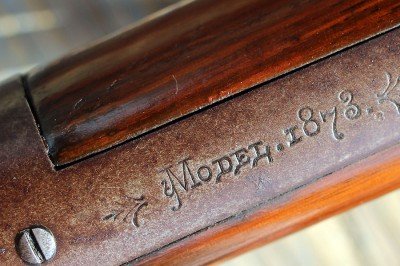
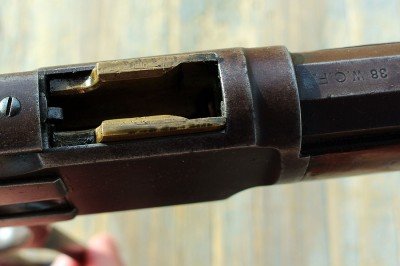
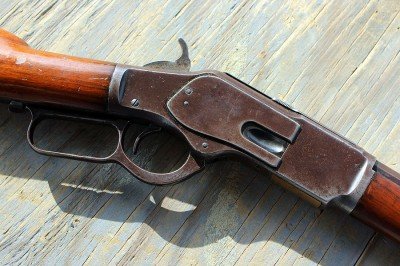
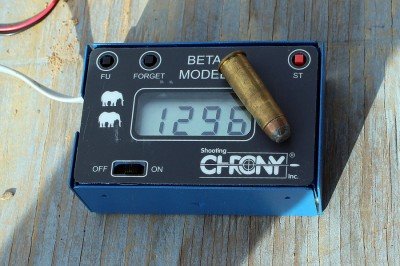

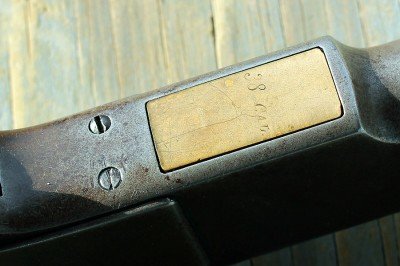

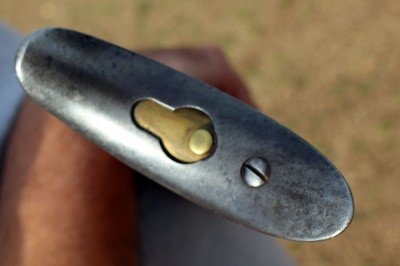
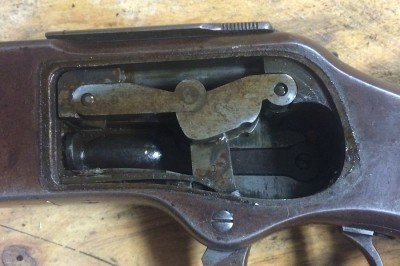
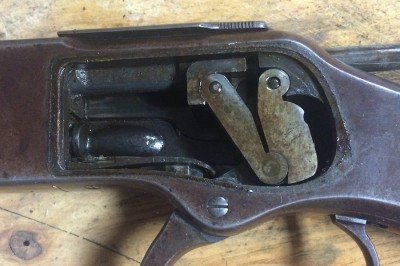
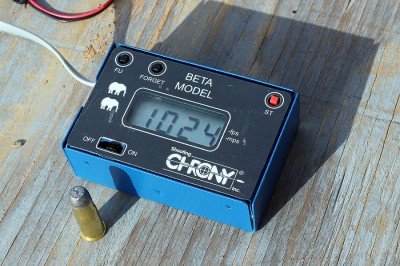
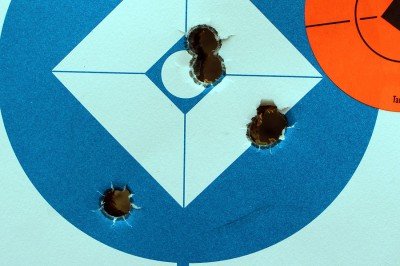
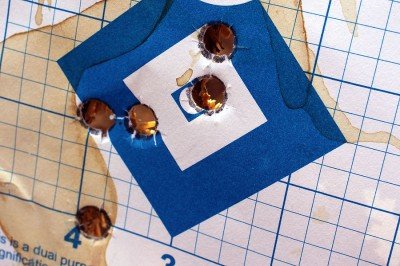
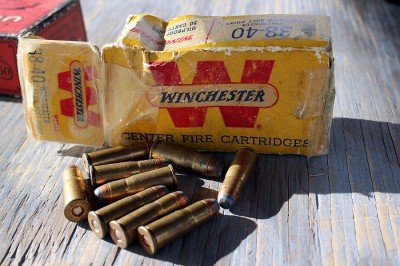
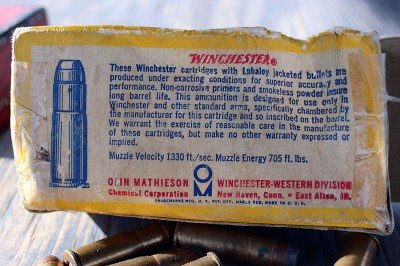
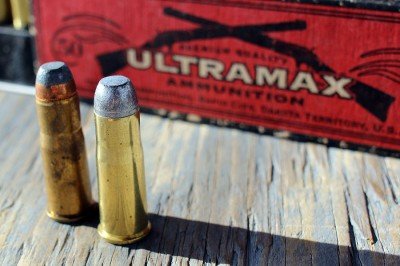
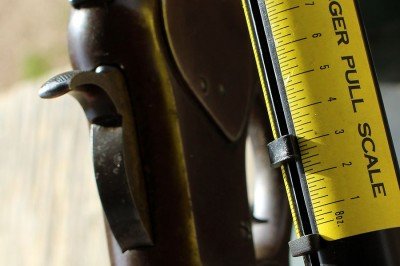
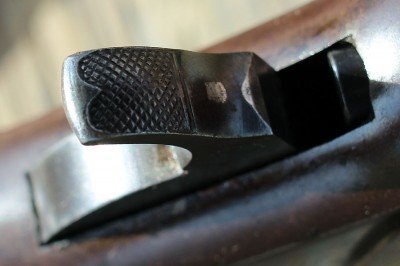
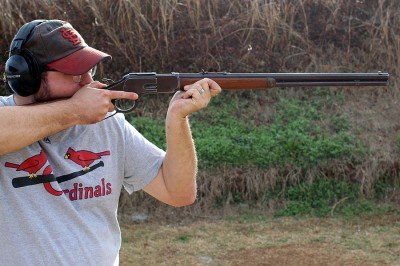
I’m in the market for a WC 1873 40-44
Just undecided or you could say not sure what size barrel I should get need some opinions
Adam
Hello. I have an 1873 lever action that I am trying to restore. After research, I have found that this particular one was made in between 1881 and 1882 and is not stamped with a caliber. I believe its gonna be the .44-40 but am not sure… is there another way to find this out? Also am having a hard time finding a replacement butt plate and tool kit… Any advice would be much appreciated.
When did they start stamping the caliber on the rifle? I read they originally didn’t stamp them with the caliber bc it was only chambered in 44 wfc.
I am interested in a 38 40 in decent condition
While reading a book on early Texas ranges they noted that their new Winchester rifles ( could be 1974 lever action) would not penetrate the shields the Indians used at one hundred yards. What caliber did they use then, 38×40 or the 44×40?
That would be the .44 rimfire, in the Winchester 66. Shorter rimfire version of the .44-40, with only 28 grains of powder instead of 40. They would have had carbines with the shorter barrel and velocities with a soft lead bullet would have been about – 1050 fps. At a distance it might be possible the bullet wouldnt penertrate a hide shield wrapped with sinew.
The high dose of fulminate in the rimfire gave it a bit more whack than the powder alone so the comparison can’t be direct.
As one who has developed a love affair with lever actions, the 1873 is on my bucket list. Not a repo or one of the new ones from Japan but an original. I have 2 1894’s in 30-30 and a Taraus M92 in .44 mag that is a ball to shoot. Some day one will come my way.
I enjoyed reading the information about the Winchester’s. I have two, both a 44-40 & a 38-40. Although I have not shot them, the previous owners did in fact shoot them. I have owned these rifles for about 15 years. Both are in excellent condition and I would be willing to part with them due to circumstances.
Tom,
That is almost tempting me beyond what I am able to bear! 🙂 I have to ask how much but could not make any promises. Right now we are in the middle of selling our house to start a build project and I don’t have a lot of disposable cash laying around. 🙁
What are you asking for you originalM-1873’s?
Are you still interested selling one of your 1873
Ada W
I was lucky enough to own two of these rifles. That was sixty years ago. The 44-40 had been an Arizona Rangers rifle (so proclaimed on the butt-stock). A year later I lucked into a 38-40 at a local gun store. The 38-40 was a little flatter shooting than the 44-40. And considerably more accurate. 2 1/2 inch groups at 100 yds. rather than 4-5 inch groups at the same distance. Off the bench. They both had Rocky Mountain front sites, one in brass, the 38-40 in German Silver. They both had full buckhorn rear sights on ramp elevators. I used to carry a small piece of candle in my pocket to soot up that front sight on the 38-40 on sunny days out in the open. I hunted mountain lions, coyotes and deer with the 38-40 for several years until someone made me an offer on the pair that I couldn’t refuse. Wish I still had the 38-40.
Check out the movie “Dark Valley” on Netflix. The rifle doesn’t really appear until the last half or so, but you might find it interesting. Sort of a German Western.
Thanks SAM TRISLER, for the old gun review.
I really like seeing them, and appreciate your effort.
All the talk made me yearn for the visual of this rifle in action, and hear the bang.
I guess what I’m trying to say is, I wish I could have watched you making those shots.
I’m throwing this on for people like me; hickok45 shooting the 1873
https://www.youtube.com/watch?feature=player_detailpage&v=2SPl9FvSrck
Review of the Winchester Model 1887 – a very unique10/12 gauge shotgun. I have my grandfather’s and plan on passing along to one of my daughters (the other will get the Model 1894 38-55 with very low serial number!).
Back in the late 1800 there was a well known hunter and hunting guide from Quebec Canada by the name of William Merrifield. He was friends with the Farris brothers Joe and Sylvane, all three were good friends and hunting buddies with Teddy Roosevelt. During the fall of 1911 Roosevelt made a “Secret Trip” back to the Bad lands to visit his friends. During that time Bill Merrifield gifted him with a 1905 Ross Rifle with his name on it. TR asked Joe Farris to hold the gun for safe keeping. later Joe Farris had the gun hanging on the wall of his store in Madora.
Had two 73’s at one time a 32/20 and a 38/40. Both shot very well. Preferred the 32/20 as it was more fun to shoot, no recoil and could work it pretty fast. I read some where that the 38/40 was originally supposed to be called the 40/38. 38 grs. of blk powder because of the reduction of the case from .44. Anyone else ever hear of this? Wish I would have kept them but traded them for some reason. How about a story on the 56/50 Spencer, just picked up an original model 1865 and have to get a center fire breech block for it. Should be interesting to shoot.
Back in 89 I got into CAS, I just happened to run onto a like new Navy arms 73 in 44-40 and having acquired a Uberti Cattleman in 44-40 I was set, bullets were a problem at that time and that was causing a problem for folks who wanted to cast lead, I bought two of the then new moulds made for the proper bullet and that was the end of that problem.
I always shot black powder and loved that rifle, one year I loaded up some factory jacketed bullets on top of a full case of 3F and went deer hunting, I’ll admit I was worried about the knock down power which was stupid but I wanted to be a good hunter, my first shot was a young white tail buck at about 50 yards, I shot him thru the heart and he dropped like a sack of rocks! of course I was worried about nothing, that bullet went thru like a hot knife with butter, I took several more deer with the 73 and never had to look for one. Like a fool when I got out of CAS and into 3 gun I sold that rifle and have regretted it ever since.
Just for the record, I hated the modern look of my 73, the color case hardening was flat beautiful, I’ve never seen better, but the blue was too “New” looking so I took it too a really great gunsmith and he went to work on it, he flat filed the flats of the barrel and in so doing removed the Navy arms markings, he then browned it like the old timers did before bluing as such came along, he browned the butt plate and lever and barrel band. he stamped 44-40 in the proper place, I had him replace the modern front and rear sights with a rocky mountain silver blade sight and a “real” ladder rear sight, that hand made front sight was awesome! when done nobody believed it was a modern rifle.
I really miss that rifle!
great articles, but how about doing an article on Winchester Model 1866, preferably the 3rd model which I believe was Winchester’s most current model being sold in in late 1869, and early 1870. My wife’s grandfather was an owner of 5 of these special rifles, he was a Captain in the Texas Rangers, and one of the most effective Comanche fighters at the time.
I’d like to see a Savage 99 in 250-3000. This is a great old firearm and has an interesting history.
Yes, one of the greatest deer rifles and cartridges. These were very popular for deer in Pennsylvania when I was a kid. It has a very interesting action as it was the first hammerless lever action and had a rotary magazine.
I believe at one time a high velocity load was offered in .44WCF by Winchester, and a .38WCF as well. These were to be used in the Model 1892 ONLY. I seem to recall that the .44 load approached .44 magnum velocities. Shooting these in a ’73 would be, of course, disastrous. What reviews would I like to see? Nearly any 19th century firearm would do. In particular, 1876 Winchester, S&W Russian Model, Martini-Henry, Sharps Borchardt.
As long as you’re doing old gun reviews, how about a Martini-Henry?
As Early commented above, I’d recommend reviewing a Colt Lightning. People make a lot of negative comments about them, but if chambered for the proper cartridge (preferably a bottleneck like the 44-40, or even the 45 Colt) they run really well. The problem most folks have is with muscle memory. If you are used to shooting a lever action, it takes some extended shooting to get smooth shooting a Lightning – it took me several months of shooting it consistently to stop “jacking” rounds, etc. Once I did, though, they are a lot of fun. Small caliber straight walled cartridges tend to give problems. I have a USFA and a Pedersoli in 44-40 that are greased lightning.
Other guns to consider reviewing are the S&W large frame break tops (No. 3, Schofield, Russian, etc.), 1875 Remington revolver, Winchester 1886, Marlin 1893/1894/1895, Remington 1889 hammered double shotgun (I have one that is tighter today than new shotguns I’ve purchased), Sharps 1874, Winchester 1885.
I’d also like to see a review of the Colt Lightning pump. I have another (near) clone. the Taurus Thumderbolt .45 Colt, which I enjoy very much. The only thing I dislike (besides the Taurus key lock), is that the 26″ barrel of the one I have is a little front heavy to my taste for a woods deer rifle. Also I would prefer the casehardened receiver version and the octagon barrel. But at the time it was a closeout deal and I paid only $450, the Ubertis, Pedersolis, etc were going for much more.
Have you ever test fired a Colt Lightning pump action rifle?
A few years ago I purchased a reproduction of the Colt Lightning made by Uberti with a 24 inch barrel and chambered for the .45 Colt pistol round.
I have owned a Winchester Model 62 pump action .22 rifle that was handed down to me from my Grandmother. I always loved shooting that little rifle and when I first saw the Colt Lightning, I thought that it looked and felt just like a larger Winchester Mod. 62. The main difference is the Winchester is a take-down rifle and the Uberti built Lightning is not.
I took my Uberti Lightning to an indoor range and fired 25 rounds through it. ( I also have a Ruger Blackhawk in .45 Colt, so I split the box between the two.)
My first impression is WOW!! What a fast, smooth shooting rifle! The pump action is effortless to fire and chamber a fresh round without loosing your sight picture.
Now, I love lever action Winchesters, I have 3 Model 94’s, an Uberti Model 1873 (.357Mag), and even a Marlin 1895S (45-70). But, I’ve never been able to work the lever action to rapid fire and still hit the target, the pump action Lightning is a breeze!
If I lived in the old west, and had the choice of either a Winchester 1873 or a Colt Lightning, I would take the Lightning hands down.
I guess that the only reason that the Winchester was the “Gun that won the West” and not the Colt Lightning was timing, not the price. In 1897. the Sears catalog has the .44-40 26″ octagon barrel Colt Lightning rifle AND the 1873 Winchester .44-40 for $12.50. Marlin lever action rifles were also selling for the same price.